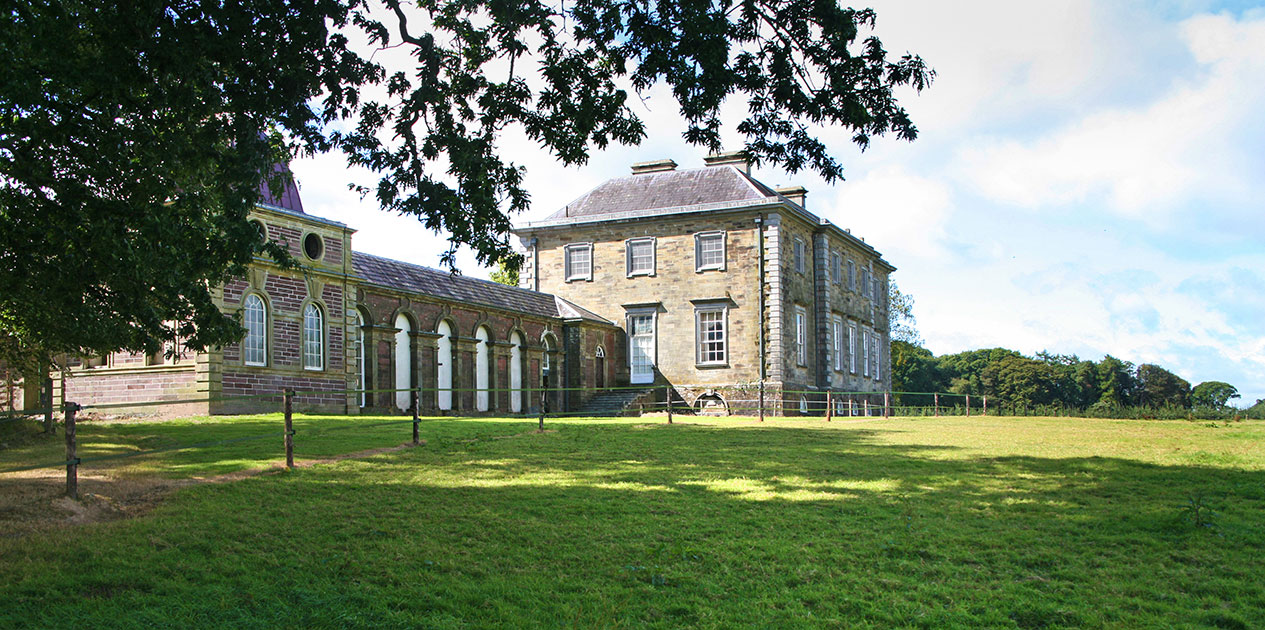Kilshannig
On a summer of a gentle wooded hillside in County Cork, just east of the old main road from Dublin to Cork and between the villages of Rathcormack and Watergrasshill, stands Kilshannig, one of the finest eighteenth century houses in Munster. The house was built between 1765 and 1766 for Abraham Devonsher, a wealthy Cork burgher and banker, in the valley of the River Bride, about six miles south of Fermoy. His architect was a Sardinian, Davisco d’Arcort, known in Ireland as Davis Ducart, whose Irish career began in the 1760s and continued until his death in about 1785.
Ducart was arguably the most accomplished architect working in Ireland between the death of Richard Cassels and arrival of James Gandon, balancing his career as a canal and mining engineer with the construction of some of Ireland’s most innovative and original eighteenth century houses. He was deeply committed to quality, matching his superb designs and flawless detailing with first class materials and superb execution, and patronising the finest craftsmen of his day. As a southern European, he remained loyal to the Baroque and never ventured into the new, fashionable, neo-Classical style.
Kilshannig has four formal fronts. The facade is of rose red brick while the other fronts are of cut sandstone, all with limestone dressings. The brick facade has a mezzanine floor, with segmental headed windows, a fine tripartite stone centrepiece with blind occuli, and a round-headed niche on the upper floor. The other fronts have more regular fenestration yet they incorporate several unusual details.
This seven-bay block is attached to a pair of square pavilions by straight narrow links, single storied and elaborately arcaded on the garden front. The wings extend back from the pavilions towards the entrance in an L-shape and reconnect to the main block by curved walls to form a pair of enclosed courtyards.
The house contains a splendid series of rich eighteenth century rooms with perhaps Ireland’s finest decorative plasterwork, executed by the Lafrancini brothers during their second visit to Ireland. These have noble proportions, magnificent chimneypieces and joinery, and deeply coved Rococo ceilings. Most notable are the columnar hall, the double height saloon, which occupies the centre of the garden front, and the superb cantilevered stone spiral staircase.
Mr. Devonsher had no sons and the estate was inherited by his nephew, after whom the house changed hands with monotonous regularity, deteriorating continuously with each passing year until Commander Douglas Merry and his wife purchased it in 1960. At that stage Kilshannig was in a sorry state. The cupolas had disappeared, one wing was ruinous and the whole house badly needed attention. But Commander Merry was a talented and enlightened owner, combining practical engineering know-how and aesthetic sensitivity with considerable DIY skills, and it is entirely due to his efforts that the house survived into the twentieth century.
His son Hugo, a successful bloodstock agent, now lives at Kilshannig. He has continued the good work and has recently given the whole house a new roof, reinstated the cupolas and clad them in copper and a great deal of other work, all been executed to the highest possible standards.
Address & Contact
Kilshannig, Rathcormack, Fermoy, Corkt: +353 25 36124
e: courtyardkilshannig@gmail.com
Available as a Film Location
Houses and Garden
Individual House Visits
Groups by Arrangement
Opening Details
September 12, 13, 14, 16, 17, 19, 20, 21, 23, 24.
10am - 2pm.
Adults €8.00
Concessions €5.00


